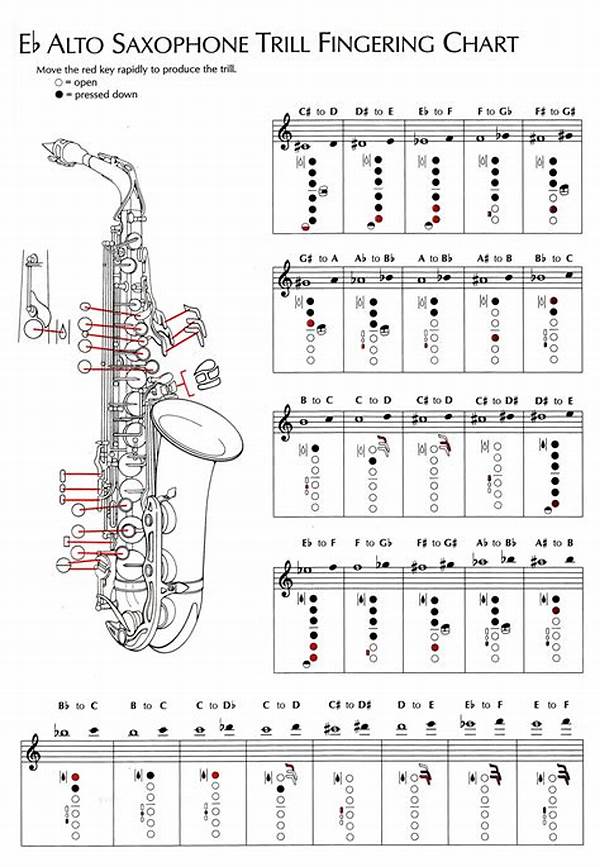So, your eager music student has decided to brave the world of jazz or classical music with the harmonious alto saxophone. But wait—choosing the right instrument isn’t just about picking the shiniest one on the shelf. Let’s face it, selecting an alto saxophone can be as puzzling as deciphering a jazz chord progression! But don’t fret. This guide will help you navigate through the nuances of making that perfect choice, ensuring your student gets an instrument that not only sounds melodious but feels like an extension of their soul.
Read More : Best Audio Instruments For Podcast Production
Imagine watching your student, eyes gleaming with joy, playing their first note on an alto saxophone that fits just right. The right saxophone provides them with confidence and inspiration, like a painter finding the perfect set of brushes. From understanding material options to gauging the sound quality, this journey is both educational and exhilarating. Now, let’s dive into the art of choosing an alto saxophone for music students without hitting a bum note!
Understanding the Basics of Alto Saxophones
Choosing an alto saxophone for music students involves more than just aesthetics. It’s about understanding the fundamentals and how they relate to one’s musical goals and physical comfort. Here’s what you should pay attention to:
Material Matters
Most saxophones are made of brass, but the finish can vary—lacquer, silver, even gold! Each finish has a distinct impact on the saxophone’s sound and durability. A lacquer finish is generally warmer and more versatile, making it ideal for most budding musicians. Silver-plated saxophones are often said to provide a brighter tone, which might be appealing to those leaning towards classical genres.
Size and Weight Considerations
For young students, the size and weight of the saxophone are critical factors. An instrument that’s too heavy might discourage practice or lead to strain injuries. Choosing a lightweight model, specifically designed for students, can support better posture and technique development.
Brand and Reputation
When selecting any musical instrument, brand reputation can be a significant indicator of quality. Esteemed brands have a commitment to craftsmanship and often provide better customer service and warranties. Brands like Yamaha, Selmer, and Yanagisawa are celebrated for their consistency and excellence in producing high-quality student alto saxophones.
How to Choose an Alto Saxophone for Music Students: A Step-by-Step Guide
Navigating the world of musical instruments might feel daunting, but taking one step at a time can simplify the journey:
Test Before You Invest
Testing different saxophones is paramount. Most reputable music stores offer trial sessions, allowing your student to experience the feel of various models. Encourage your student to play the same piece on multiple saxophones—listen for a seamless and comfortable sound that meets their expectations.
Seek Professional Advice
Consulting with a music teacher or professional saxophonist can provide invaluable insights. These experts understand the subtleties of saxophone craftsmanship and can help identify potential issues early on. Scheduling an appointment with a saxophone expert could be the wisest investment in your musical journey.
Read More : Instruments Used To Measure Temperature And Pressure
Balancing Budget and Quality
Saxophones can be a significant investment, with prices ranging from a few hundred to several thousand dollars. It’s crucial to balance quality with your budget. Student models are designed to be both affordable and durable, ensuring students can explore their musical interests without breaking the bank.
Details on How to Choose an Alto Saxophone for Music Students
To drill down into specifics, consider the following aspects when choosing an alto saxophone:
Important Tips on How to Choose an Alto Saxophone for Music Students
Let’s break down the process with key action steps:
Summary: The Journey to Music
Choosing an alto saxophone is a captivating journey filled with melodies waiting to be discovered. Each step, from testing to selecting, plays a critical role in nurturing a student’s musical passion. By focusing on the physical, tonal, and aesthetic attributes of the instrument, you ensure that your student holds not just a saxophone, but a key to an exciting musical adventure.
The right saxophone can transform practice into pleasure, translating hard work into masterpieces. So go ahead, set the stage for an enduring love affair with music. Here’s to the notes that will shape, sway, and serenade the world!
